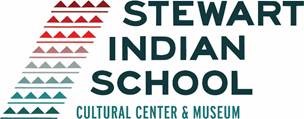Stewart Indian School Cultural Center & Museum Awarded $20,000 from Western States Art Federation Cares Act Fund

The Stewart Indian School Cultural Center & Museum received approval of a grant from the Western States Arts Federation (WESTAF) CARES Act Fund in the amount of $20,000.
Opened to the public in January, the Cultural Center & Museum tells the stories and experiences of students who attended the Stewart Indian School from 1890-1980. Stewart Indian School was operated by the federal government for 90 years to forcefully educate Native American children. This assimilation policy impacted thousands of Native students not only from the Great Basin tribal nations, but over 200 tribes in the west.
“We are truly grateful to the WESTAF CARES Relief fund. The current health crisis has negatively impacted Nevada’s economy and we faced severe budget cuts to our museum’s operation in 2021,” said museum director Bobbi Rahder. “This grant helps small organizations with their operating expenses during the COVID-19 crisis. We are honored to accept this award from WESTAF and the National Endowment for the Arts. It allows us to reopen our museum soon and stay operating for the coming year.”
WESTAF CARES Relief Fund for Organizations is a competitive grant program supported by the National Endowment for the Arts through the Coronavirus Aid, Relief, and Economic Security (CARES) Act passed by Congress and signed into law in March 2020. The WESTAF CARES Relief Fund has provided general operating support to 45 eligible arts and culture organizations impacted by the COVID-19 pandemic. Applications were assessed on the following criteria: inclusivity, demonstrated need, artistic and cultural merit, and public and community benefit. Awards of up to $20,000 were made to organizations across the WESTAF 13-state region with at least one grant awarded per state.
Although the cultural center closed on March 13th, due to the health crisis, visitors can still use the self-guided cellphone audio tour to explore the historic campus. This walking tour allows guests to view the spectacular stone buildings flanked by the beautiful Sierra Nevada Mountains, and to learn from alumni about their experiences at the boarding school. These firsthand accounts are also available at: https://stewartindianschool.com/walking-trail/.
The compelling history of Stewart is shared in interpretive exhibitions, educational activities, lectures, and special events. The museum plans to reopen by the end of July.
For more information about the cultural center please contact Bobbi Rahder, Museum Director, at 775-687-7606 or e-mail at [email protected].
The new Stewart Indian School Cultural Center & Museum – long a dream of alumni and tribal leaders – opened on Monday, Jan. 13, 2020 Located at 1 Jacobsen Way, in Carson City, Nev., the Cultural Center & Museum occupies what was once the school’s administrative building. With vital backing from Nevada Governors Brian Sandoval and Steve Sislolak, and $4.5 million in funding from the Nevada Legislature, the Cultural Center & Museum provides a place for healing for thousands of American Indians affected by federal boarding schools such as Stewart. The cultural center shares with the public first-hand accounts of the Native American students, and how these federal policies still reverberate in Native communities. In addition to the permanent exhibition, “Our Home, Our Relations,” the Cultural Center & Museum features the Wa-Pai-Shone Gallery, displaying art of the Great Basin Native Artists; the Storytelling Room for storytelling and craft making; a research room where relatives can research their family members who attended Stewart; and classroom space for educational activities, lectures, and public programs.
The Nevada Indian Commission (NIC) serves approximately 22,000 citizens of 27 federally recognized Tribal Nations, plus an additional 50,000 self-identified Native Americans who make the Silver State their home. Nevada’s Native American communities vary greatly in their respective languages, songs, traditional foods, and Indigenous territories. Created by statute in 1965 to “study matters affecting the social and economic welfare and well-being of American Indians residing in Nevada,” the Commission effectively serves as a liaison between the State and our Tribal communities and citizens.
